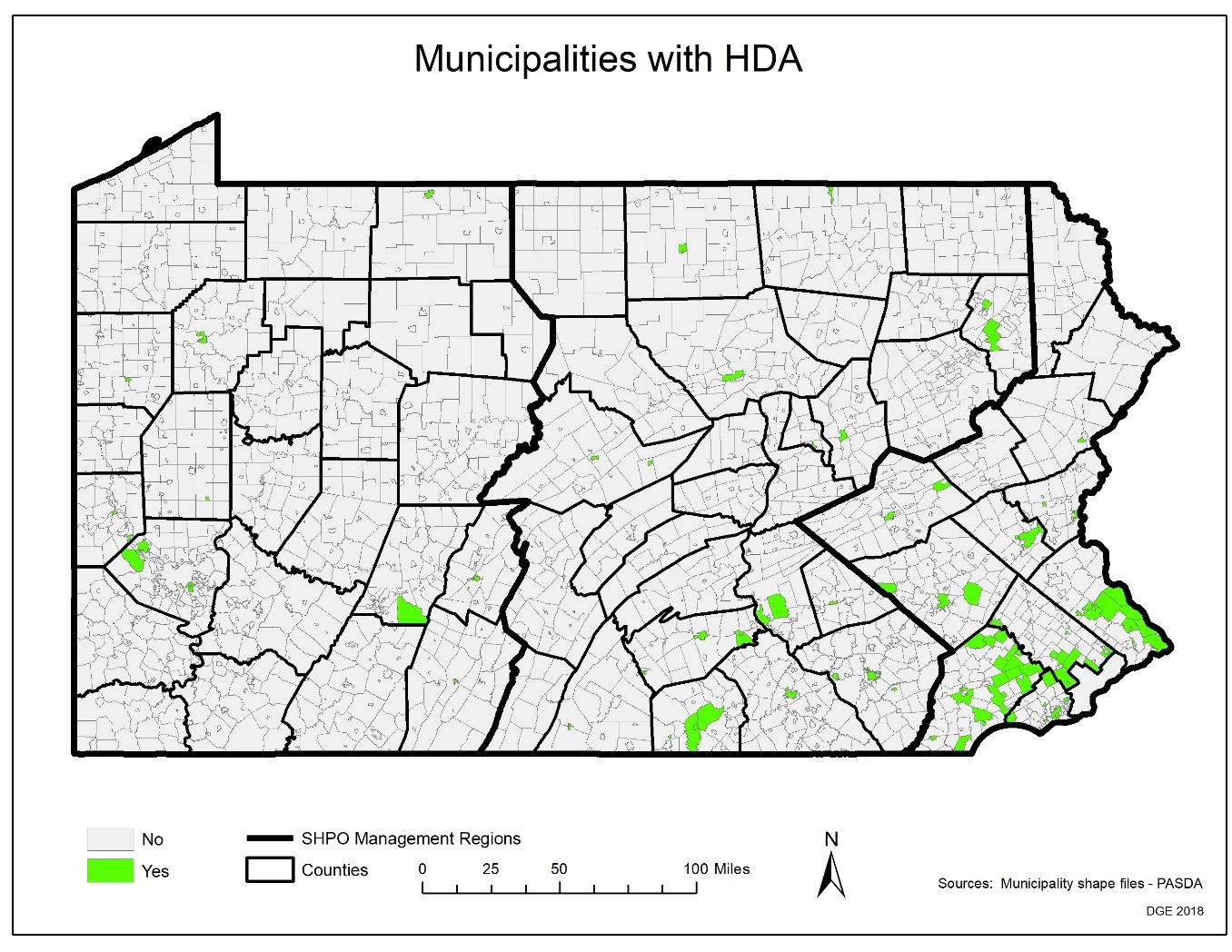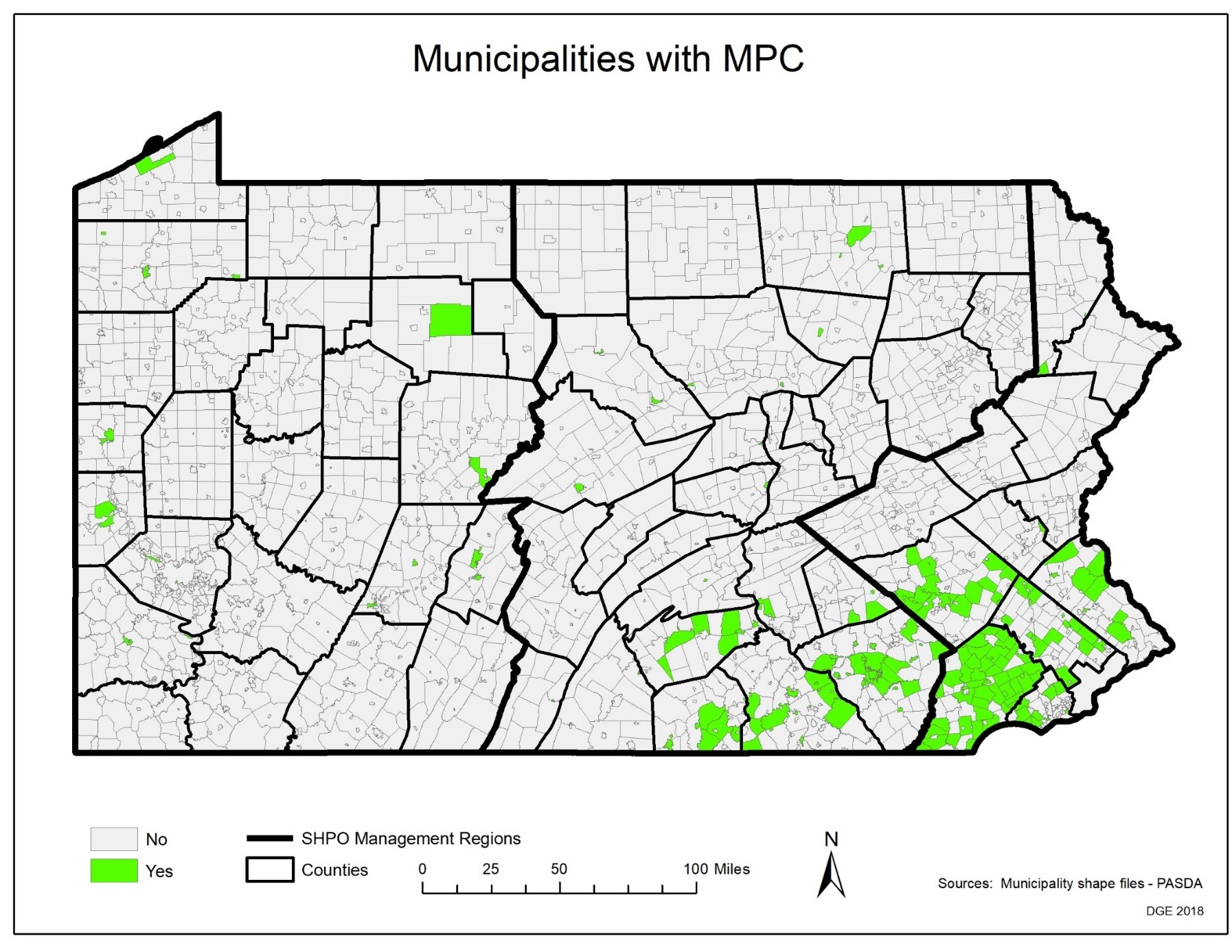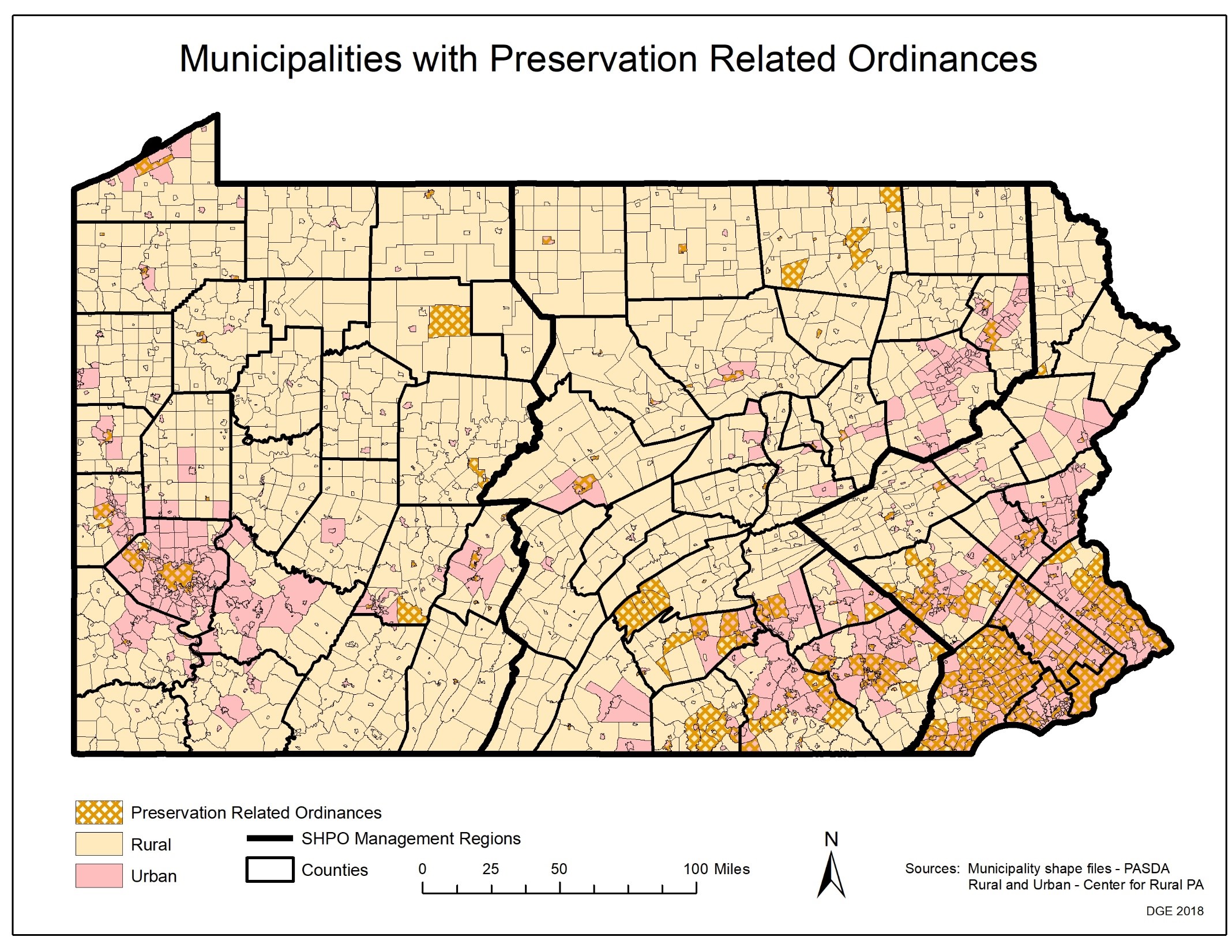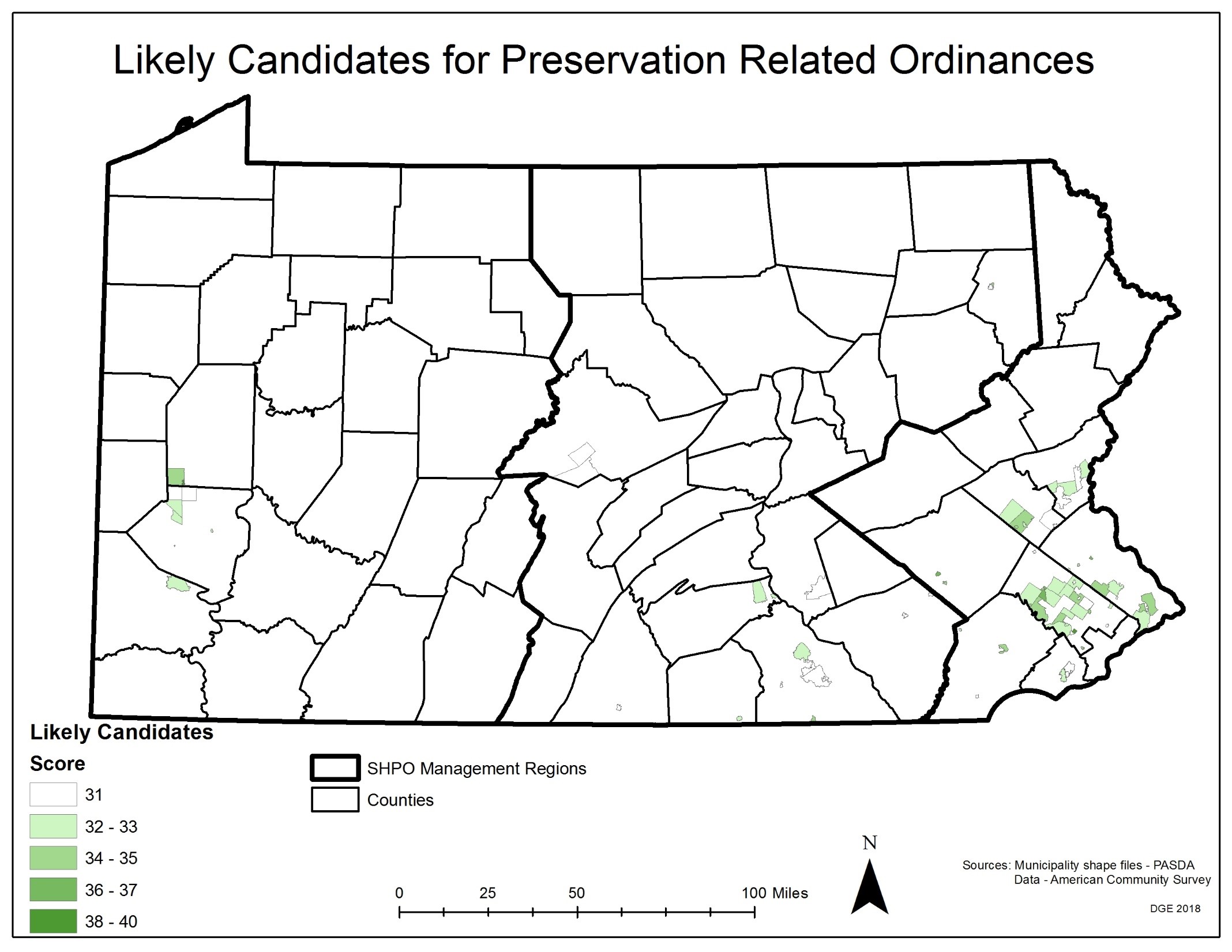Have you ever wondered WHERE local historic preservation programs are being implemented in Pennsylvania? After a year-long study of historic preservation ordinances, supported by the Center for Rural Pennsylvania, we can now answer that question… and we can also begin to answer the WHO, the HOW and the WHY NOT.
Before this study, we knew which communities used the provisions of the Historic District Act (HDA) to preserve their historic resources. These municipalities are shown in the map below.

Municipalities in Pennsylvania that use the Historic Districts Act.
But we didn’t know which municipalities were using the provisions of the Municipalities Planning Code (MPC) to preserve their historic resources. After surveying county planning directors, meeting with municipal officials and reading oodles of zoning ordinances, subdivision and land development ordinances and comprehensive plans, we can now answer the MPC question too. The municipalities using the MPC to preserve their historic resources are in the map below.

Municipalities using provisions of the MPC.
Even better though, we now know so much more about historic preservation activity in Pennsylvania as is evident in the table below. We now have a better sense of WHO is doing WHAT WHERE.

Summary of local historic preservation tools in Pennsylvania.
Astonishingly, only 294 or 11% of the states’ 2,562 municipalities have enacted one or more type of historic preservation regulations. The most commonly used legislation is the MPC followed by the HDA. A small number of municipalities use both MPC- and HDA-based ordinances. Only 26 use a Subdivision and Land Development Ordinance to regulate historic resources.
Putting all of this information together, the map below shows WHERE local preservation programs are being implemented in the Commonwealth.

Municipalities with preservation-related Ordinances.
Geographically, the majority of the municipalities are located in the eastern and central part of the state. In answering the WHO question, 215 of the municipalities with historic preservation provisions are urban and 79 are rural. In terms of municipality types, there are 128 second-class townships, 124 boroughs, 21 cities, 20 first-class townships, and one town with historic preservation ordinance provisions.
This research also allowed us to answer HOW historic preservation is taking place. As the table below shows, there is a range of regulatory approaches being used to protect historic resources.

Approaches to local historic preservation being used by Pennsylvania municipalities.
As part of the research, we also conducted case studies with municipal officials. From these meetings, we gained critical insight into what is and is not working in terms of historic preservation efforts in the Commonwealth.
From the interviews, it was clear that the effectiveness of MPC historic preservation ordinances varies considerably by municipality. Depending on the particular ordinance, the regulations may be stringent or ineffective. Methods of enforcement also vary widely. Some communities are aggressive in ensuring equal and consistent enforcement with penalties, other communities have ordinances with very little in the way of meaningful enforcement or penalties. Municipalities, even those that reported weak or inconsistent enforcement, reported that their ordinances were effective at protecting historic structures from being modified or destroyed.
These case studies also provided insights into the question of WHY NOT; why don’t more municipalities have historic preservation ordinances on the books? One issue is a lack of public support for historic preservation. Ideological support for property rights and the personal economic interests of individuals or elected officials responsible for administering historic preservation ordinances can influence the implementation and effectiveness of ordinances.
Another concern is the perceived financial cost of historic preservation, especially in areas where property owners struggle with basic property maintenance. Additionally, implementation of historic preservation regulations under the HDA and the MPC requires municipalities to have the administrative capacity, access to historic preservation expertise, and resources needed to monitor and enforce regulations. The current laws may make historic preservation ordinances challenging for smaller or lower income communities.
Additional insight into the WHY NOT question came from a socio-demographic analysis. We found that municipalities with more involved and complex historic preservation ordinances typically have higher per capita incomes, greater median home values, higher rates of population growth, and greater population densities. Higher educational attainment and lower median age also broadly correlate.
Conversely, communities that are less affluent or experiencing economic distress, and are not experiencing growth or are losing population, and areas with lower levels of educational attainment are less likely to have local historic preservation ordinances.
Given the socio-demographic attributes that support the presence of historic resource preservation, we looked for municipalities with similar characteristics that are not currently engaged in historic resource preservation. Seventy-four municipalities were identified as being potential candidates for implementing a historic preservation ordinance, given similar characteristics that are associated with historic preservation in other parts of the state. These municipalities are shown in the map below.

Location of municipalities identified as likely candidates for local historic preservation.
In the end, it is clear that the vast majority of municipalities in Pennsylvania are not utilizing the authority provided to them under the MPC and HDA to protect their historic resources. And the majority of municipalities that are engaged in historic resource preservation are doing so on a limited to moderate basis. Socio-demographics plays a part in the lack of local historic preservation programs. As both a social good and an engine for economic development, historic preservation should be a tool available to all communities in the Commonwealth.
If you are interested in looking at our interactive online maps of historic preservation, you can do so at http://arcg.is/19DW8L. Similarly, an interactive online map of the socio-demographic data is available at http://arcg.is/1raHa8. The full report including our policy considerations is available at http://www.rural.palegislature.us/documents/reports/Historic-Preservation-Ordinances-2018.pdf.
This week’s post is by guest author Angela Cuthbert, PhD, a Professor of Geography at Millersville University. This research was a collaboration with Drs. Steven Burg and George Pomeroy at Shippensburg University and was funded by the Center for Rural Pennsylvania.

How would an individual go about identifying historic property for preservation? I live adjacent to a property on which there’s a 17th century home. How to proceed? Thanks